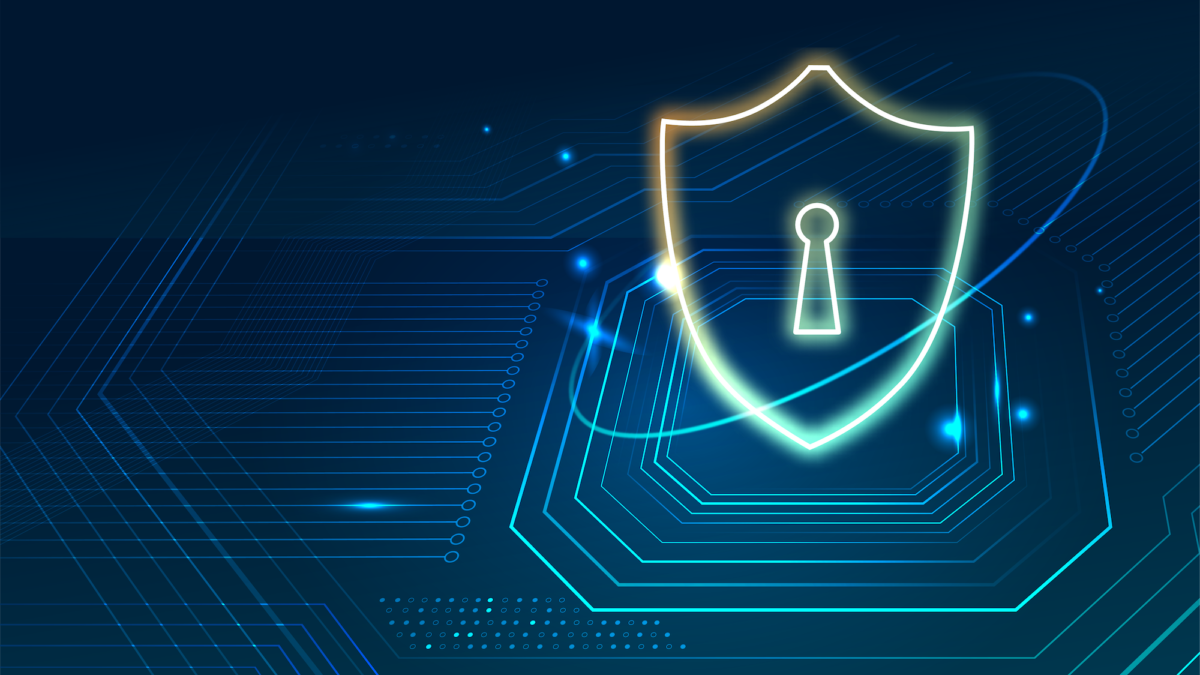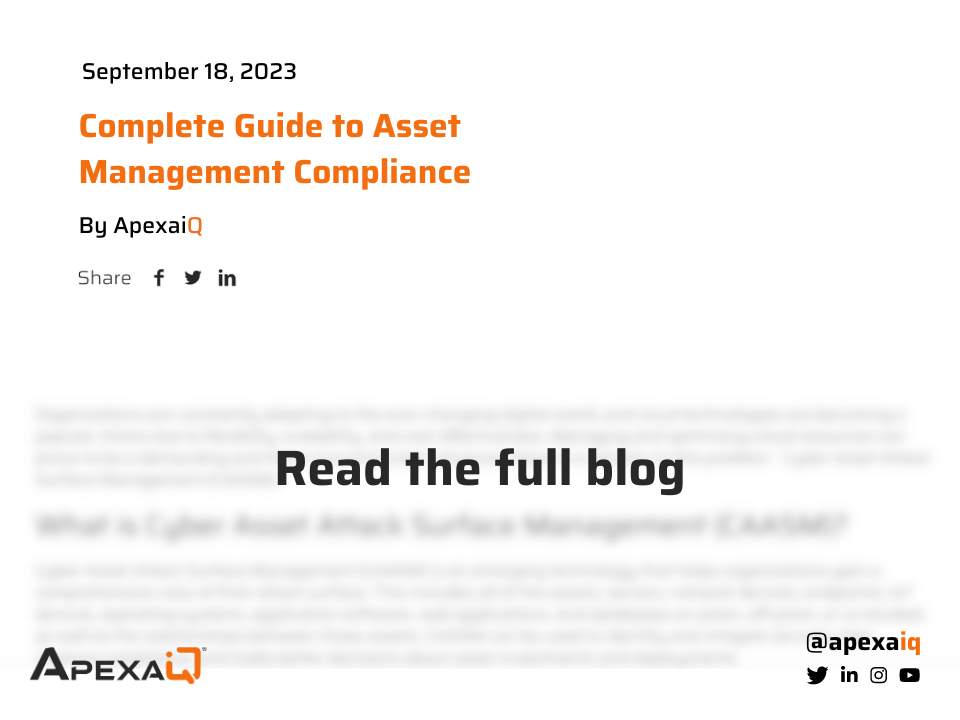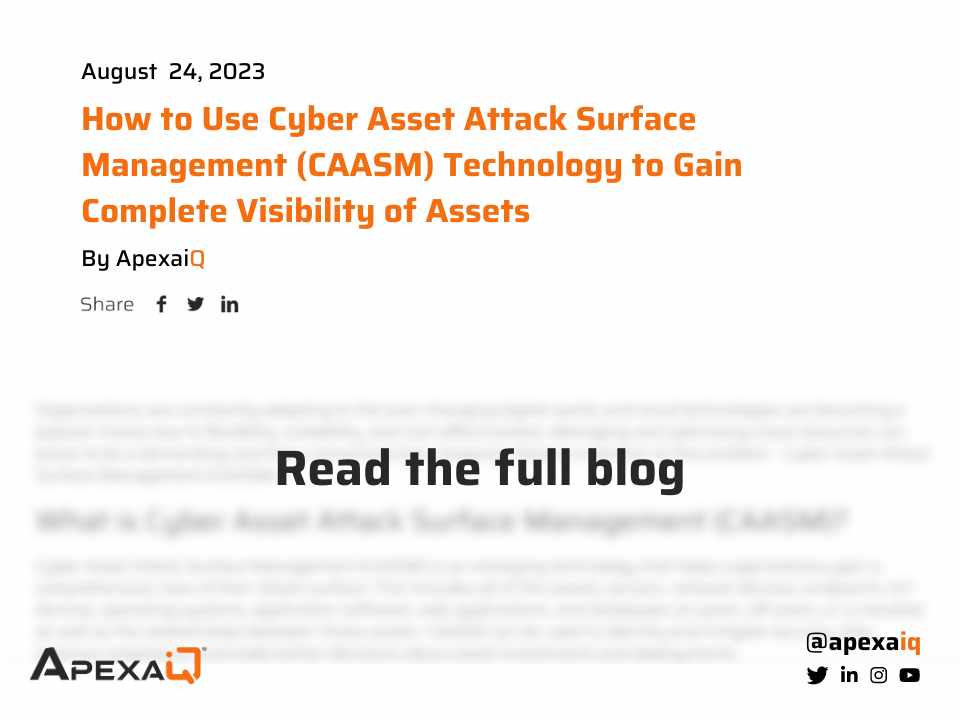
February 6, 2023
Cybersecurity Asset Management: Identify Your Technology Assets in Real Time
By Apexa iQ
As organizations continue to increase in size, their technology assets will continue to grow too. Understanding how to identify your technology assets in real-time with cybersecurity asset management is essential to a company’s cybersecurity stack as it can help save your organization from cybersecurity attacks on vulnerable assets.
What Is Cybersecurity Asset Management?
We’ve all found items while cleaning up our closets, drawers, basements, attics, etc., and think to ourselves “Wow I didn’t know I had that!” The same is true in your technology environment. The difference is not knowing the entirety of what you have in your technology environment can be very dangerous. In the world of cybersecurity, you simply cannot secure something if you don’t know it exists. Your organization is only as strong as your weakest link. That is why cybersecurity asset management is a critical component for your company.
Cybersecurity asset management is the process of identifying all technology assets in your organization’s (usually a business) technology environment such as hardware, software, SaaS-based products, etc., and identifying any security gaps that each asset may have. These security gaps could be vulnerable computers that have outdated software, unknown or forgotten assets, assets that have reached end-of-life, etc.
This asset management process continuously discovers, remediates, and aims to improve the cybersecurity posture for internal and external technology assets before the attackers can get to them.
Benefits of Cybersecurity Asset Management
Cybersecurity asset management is the process of identifying and managing your technology assets – from hardware to software, and even your employees. It’s a critical component of good security management because it allows you to prioritize where you need to spend time and money on your cybersecurity efforts, as well as ensuring that your organization’s assets are secure, compliant, and working as they should.
The Benefits of Effective Cybersecurity Asset Management include:
- Discover unknown assets: Asset management solutions account for making sure that valuable technology assets in your organization are being tracked for and used as well as tracking the maintenance, obsolescence, and compliance of your technology assets. Identify all devices, in real-time, that are connected to your network, including desktops and laptops, servers, printers, and more. This will help you map out the entire infrastructure of your organization and enable you to make informed decisions about cyber security risks.
- Mitigate security threats: Gain insights into your internal and external attack surface to reduce the risk of data breaches. With an accurate inventory of your internal assets, you can understand what assets are vulnerable, have reached end-of-life, and are in need of some sort of remediation.
- Compliance: Cybersecurity asset management can help your company achieve compliance with regulations such as GDPR and HIPAA by ensuring that all technology assets meet regulatory requirements.
- Manage risk: Monitoring data usage across your network infrastructure allows you to see data usage across all devices connected to your network so that you can identify potential security breaches before they occur.
- Improved productivity through reduced downtime: Identify your technology assets in real-time. It’s not if, but when there is a cyberattack or other security incident, you will know exactly what you need to do to protect your business and its data and stay afloat.
- Mitigate technical debt: Cybersecurity asset management helps you save money by reducing risk and preventing downtime. It also helps you make more efficient use of your resources by ensuring that all systems are up to date with the latest software updates, patches, and antivirus programs.
Cybersecurity Asset Management Approach
Now that we have talked about what cybersecurity asset management is and the benefits that it provides organizations, let’s talk about the types of cybersecurity asset management.
Asset discovery
This is the process of identifying all technology assets, including hardware and software, in your network. This process will help maintain an accurate inventory of assets; what each device does, how it connects to other devices, who owns it, and how it's being used.
Asset inventory
This is the process of collecting information about every device on your network. Asset inventories are important because they help you know what devices are vulnerable or infected with malware or viruses.
Asset visibility
How will your organization be using asset information and know if the details are sufficient for you to use? Knowing certain details such as versions for all software that is installed on your machines will help to identify a wider range of vulnerabilities that are present rather than just knowing the operating system.
Configuration management database (CMDB)
A CMDB is a database that stores information about every device on your network, including serial numbers, IP addresses, operating systems, etc., ensuring that asset information can be used productively. It also keeps track of updates that have been applied to those devices so that you can easily determine whether any vulnerabilities exist in them or not.
Restricting assets
We know that passwords are considered classified information and wouldn’t share that with anyone willingly. When collecting data on your assets, consider sensitivity and confidentiality. Apply appropriate protections and access restrictions, while ensuring relevant use cases are supported. For example, all users should be able to look up the assets they are responsible for, but arbitrary bulk queries should be prevented. With appropriate restrictions in place, this will help mitigate potential attackers to find useful information.
Who Should Oversee Cybersecurity Asset Management?
In short, everyone, including non-IT personnel, should participate in overseeing cybersecurity asset management. As stated before, your organization is only as strong as its weakest link. For this reason, a big part of cybersecurity asset management involves making sure that all employees understand their role in protecting company data from theft or misuse by unauthorized users.
When it comes to cybersecurity, it's not just about protecting your data. You also need to protect the assets that make up your technology infrastructure. These assets can include everything from workstations and laptops to firewalls and routers.
As a business owner or manager, you have a responsibility to know what assets are in your organization, where they are located, and how they are being used across the company. This is especially important as we move into an era of increased IoT devices and data breaches that often involve stealing personal information. Those who manage this process should understand how their company's assets are being used so they can make better decisions about cyber risk management strategies and investments in security technologies or training programs for employees.
Cybersecurity Best Practices for Your Organization
- Multi-factor authentication: verifying a user’s identity with two or more independent credentials by using an app or pushing notifications to another device. It is also important not to have duplicate passwords for work and personal logins. The recommended time frame to change your password is about every 90 days.
- Phishing and training: train your employees to identify any types of fishing emails and red flags through security training and regular testing.
- Endpoint security: protecting your endpoints (desktops, laptops, servers, etc.) with monitoring and remediation.
- Vulnerability assessments: vulnerability scanning will quickly scan, identify, and patch any vulnerabilities found within your organization’s endpoints.
- Incident response: it’s not if, but when an attack will happen. Having a documented response plan will save time and money when said incident occurs.
The first step in your cybersecurity asset management program is to identify all of your technology assets. That's the easy part. The hard part is keeping track of them as they move from one location to another, and from one business group to another, and from one owner to another.
But you can't stop there. You need to keep tabs on these assets at all times — not just when they're being moved around or sold off, but also during their everyday operations and use by employees. This requires real-time tracking that enables you to identify any potential problems before they become a major headache for your organization.


